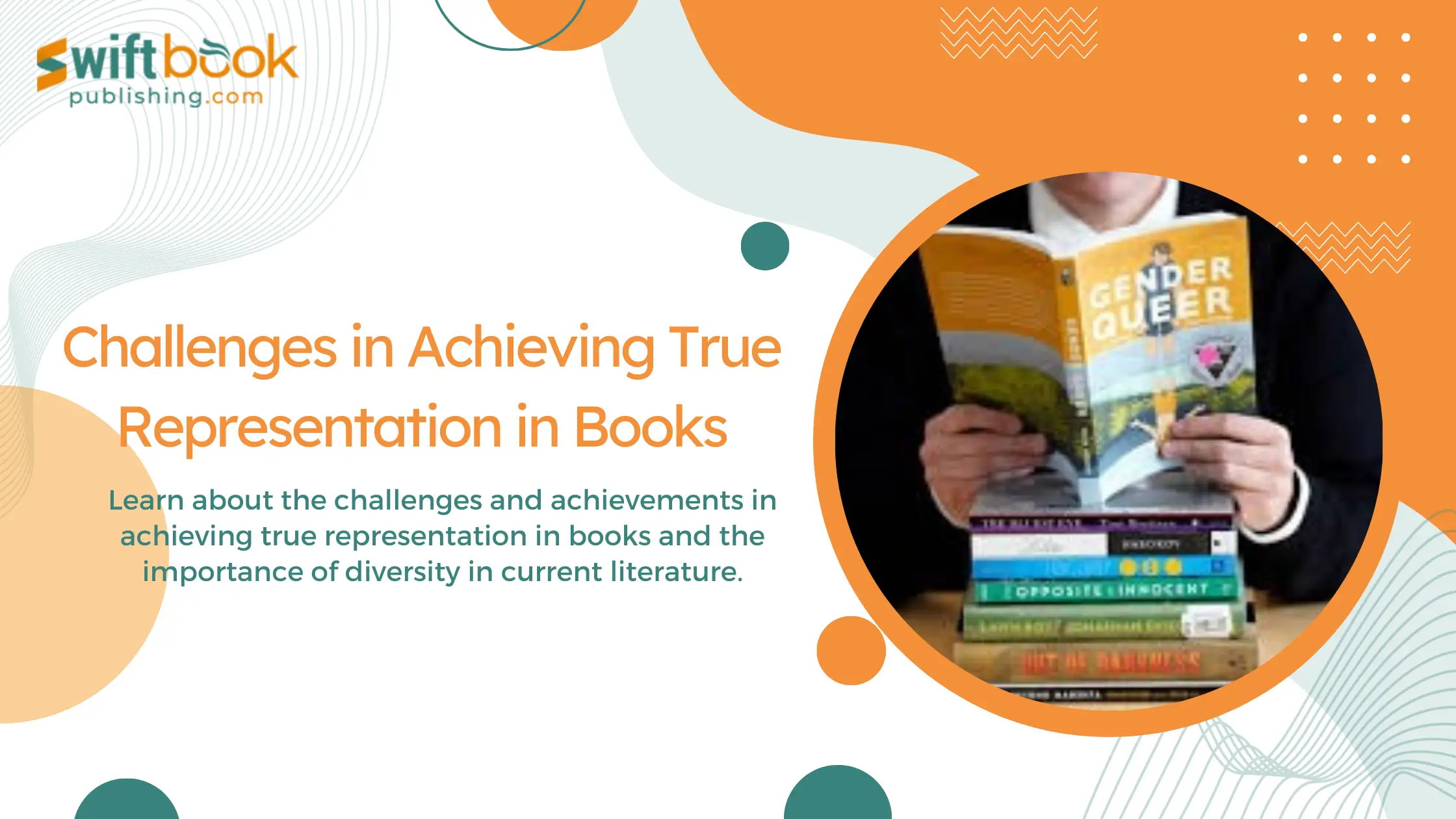Have you ever picked up a book and wondered why the characters all seem to share the same background? Or why certain voices and experiences are left out? If you’re feeling this way, you’re not alone.
The demand for representation in books has surged, reflecting a growing recognition of the importance of seeing oneself reflected in the stories we read. This shift is not just a trend but a necessary evolution in literature that acknowledges the diverse and multifaceted world we live in. Readers, especially from marginalized communities, are seeking characters and narratives that resonate with their own experiences, beliefs, and struggles.
According to a survey by the Cooperative Children’s Book Center, only 31% of children’s books published in 2021 featured characters from non-white backgrounds, showing some progress yet still highlighting the long road ahead toward equitable representation.
Historically, the publishing industry has faced significant criticism for its lack of diversity, often prioritizing stories that cater to a narrow demographic. This has led to a literary landscape where many readers cannot find characters who look like them, think like them, or live in environments similar to theirs.
The impact of this gap goes beyond disappointment; it can contribute to feelings of exclusion and invisibility among underrepresented groups. A 2019 report from the University of Wisconsin-Madison revealed that even with increasing awareness, 76% of all publishing industry employees identified as white, underscoring the systemic issues contributing to the lack of diversity in literature.
This blog aims to delve into the multifaceted issue of representation in books, exploring both the challenges that have historically hindered diverse storytelling and the recent progress made toward a more inclusive literary world. By examining these factors, we can better understand the ongoing efforts required to achieve true representation and why it matters for readers of all backgrounds
The Historical Lack of Representation in Books
Historically, books have predominantly featured characters and stories that align with the perspectives of white, cisgender, heterosexual individuals. This lack of diversity in books stems from the longstanding control that a homogeneous group of gatekeepers; book editors, literary agents, and eBook publishers; has had over the publishing industry. Their influence often dictates which stories are seen as marketable or worthy of being published.
This absence of representation in books has created a literary environment where many readers struggle to find characters they can relate to. For people of color, members of the LGBTQ+ community, individuals with disabilities, and those from various socio-economic backgrounds, the inability to see themselves in books sends a powerful, often damaging message: their stories are not important enough to be told.
Why Does Representation Matter in Literature?
The importance of representation cannot be overstated. Stories shape our understanding of the world and the people in it. When the majority of books portray only a narrow slice of society, it limits our perspectives and reinforces harmful stereotypes. True representation in literature helps to challenge these biases and build empathy by offering readers a glimpse into lives different from their own.
For readers from underrepresented communities, seeing themselves in books is crucial for their self-esteem and sense of identity. It validates their experiences and signals that their stories matter. This is particularly significant in children’s literature, where early exposure to diverse characters can influence how young readers see themselves and others. Representation in children’s books is essential for nurturing a generation that values diversity and inclusivity.
The Challenges of Achieving True Representation in Books
Despite the clear benefits of diverse representation, achieving it in literature comes with several challenges:
- Gatekeeping in the Publishing Industry: A significant barrier to representation in books is the traditional gatekeeping role played by editors and publishers, many of whom come from similar, often privileged, backgrounds. This lack of diversity among decision-makers means that stories from marginalized communities are frequently overlooked or altered to fit mainstream tastes.
- Tokenism in Storytelling: One of the pitfalls of trying to include diversity is tokenism, where characters from marginalized groups are added merely for the sake of appearing inclusive. These characters often lack depth and exist to tick a diversity checkbox, rather than being fully realized individuals. Tokenism not only falls short of true representation but can also perpetuate stereotypes.
- Cultural Appropriation Concerns: When authors from outside a marginalized community attempt to write stories about that community, there’s a risk of cultural appropriation. Without a genuine understanding and respect for the community’s history and culture, these narratives can be shallow or offensive, further alienating the very people they aim to represent.
- Market Demand and Profitability: Publishers often make decisions based on what they believe will sell. There’s a lingering misconception that books featuring diverse characters won’t appeal to the mass market, making publishers hesitant to take risks on these stories. This mindset contributes to the ongoing cycle of underrepresentation.
Progress in Achieving True Representation in Books
While the road to true representation is still long, significant strides have been made in recent years:
- Recognition of Diverse Voices: More books by authors from underrepresented groups are gaining recognition and success. The popularity of works by authors like Angie Thomas, Jason Reynolds, and Nicola Yoon illustrates that there is a substantial demand for diverse stories. These authors have brought authentic representation to the forefront, proving that readers are hungry for narratives that reflect a variety of experiences.
- Dedicated Initiatives and Awards: Efforts like the We Need Diverse Books movement have been instrumental in advocating for more diversity in literature. Additionally, awards that celebrate diverse storytelling, such as the Coretta Scott King Award and the Stonewall Book Award, play a crucial role in highlighting and honoring books that provide authentic representation. These initiatives encourage authors and publishers to explore narratives beyond the mainstream.
- The Rise of the Own Voices Movement: The Own Voices movement emphasizes the importance of stories written by authors who share the same marginalized identities as their characters. This has led to more authentic and respectful portrayals, as authors draw from their own lived experiences. Own Voices books offer a level of depth and authenticity that can only come from within the community being represented.
- Diversity in Children’s Literature: Representation in children’s books is particularly impactful. The past few years have seen a rise in children’s books that feature diverse characters and storylines, providing young readers with the opportunity to see themselves reflected in the stories they read. Books like Hair Love by Matthew A. Cherry and Julian is a Mermaid by Jessica Love offer positive, affirming narratives that celebrate diversity.
- Increasing Diversity in Publishing: Some publishers are taking active steps to diversify their staff and author rosters. By hiring editors, agents, and decision-makers from various backgrounds, these publishers are working to dismantle the barriers that have historically kept marginalized voices out of the spotlight. This shift is crucial for ensuring a broader range of stories are considered and published.
The Role of Authors and Readers in Promoting Diversity
Authors’ Responsibility
Authors play a pivotal role in advancing diversity in literature by creating inclusive and authentic narratives. To achieve this, authors should commit to thorough research and understanding when writing characters from backgrounds different from their own. This involves going beyond surface-level portrayals and delving into the lived experiences, cultural contexts, and unique challenges faced by these characters. Authors can benefit from engaging with diverse voices through interviews, sensitivity readers, and cultural consultants to ensure their representations are both accurate and respectful.
Writing inclusively also means avoiding stereotypes and clichés that can perpetuate harmful biases. Instead, authors should strive to create well-rounded, multidimensional characters whose experiences are integral to the story and not merely decorative. This approach enriches the narrative and provides readers with a more genuine and varied portrayal of different lives and cultures.
Readers’ Role
Readers also have a crucial role in promoting diversity in literature. By actively seeking out and supporting books that feature diverse characters and authors, readers can help drive demand for inclusive literature. Purchasing diverse books, leaving reviews, and recommending them to others are powerful ways to support and amplify voices that might otherwise be marginalized.
Readers’ advocacy extends to using their platforms, whether social media, book clubs, or community groups, to highlight and celebrate diverse literature. Sharing recommendations and positive feedback about books that provide authentic representation can help these works reach a wider audience and encourage publishers to invest more in diverse stories.
Moreover, readers can contribute to the discourse around diversity in literature by engaging in conversations about representation and its importance. This not only helps raise awareness but also holds the literary community accountable for continuing to improve and evolve.
In summary, promoting diversity in literature is a collaborative effort between authors and readers. Authors must approach their craft with sensitivity and dedication to authentic representation, while readers can support and advocate for diverse books, helping to ensure that a wider range of voices and stories are heard and valued.
Educators in Promoting Representation
Educators, too, have a responsibility to incorporate diverse literature into their curricula. Representation in education is vital for fostering an inclusive environment where all students feel seen and valued. By exposing students to a variety of perspectives through books, educators can help build empathy and understanding, shaping a more inclusive society.
Ongoing Efforts and Future Directions
Continued Advocacy
Maintaining a focus on representation in books requires persistent advocacy and effort. While progress has been made, it’s crucial for individuals, organizations, and institutions to continue pushing for diverse and inclusive literature. Advocacy efforts can include supporting initiatives and organizations dedicated to promoting diverse voices, such as the We Need Diverse Books movement and the #OwnVoices campaign. Additionally, engaging in dialogues about representation, attending related events, and participating in discussions about literary diversity can help keep the issue at the forefront of the literary community.
The publishing industry itself must commit to long-term strategies that prioritize diversity, including revising editorial practices, diversifying hiring practices, and investing in underrepresented voices. By continuously evaluating and addressing gaps in representation, the industry can work towards a more inclusive and equitable literary landscape.
Increased Visibility
Increasing the visibility of diverse literature is another key factor in promoting representation. Media adaptations of books provide a powerful platform for diverse stories to reach broader audiences. Successful adaptations, like the Netflix series of The Babysitter’s Club or the film adaptation of Angie Thomas’s The Hate U Give, help elevate the profiles of diverse books and their authors, bringing their stories to new readers who might not have encountered them otherwise.
Partnerships with educational institutions can also enhance visibility and support for diverse literature. Incorporating diverse books into school curricula, library collections, and reading programs exposes students to a wider range of perspectives and encourages young readers to engage with and value diversity from an early age. Educators and librarians play a crucial role in selecting and promoting diverse texts, helping to foster a more inclusive literary environment.
Future Trends
Looking ahead, several trends may further enhance representation in publishing:
- Rise of Diverse Voices in Publishing: As more diverse authors gain recognition, they will likely bring unique perspectives and stories to the forefront. This shift will continue to challenge traditional narratives and expand the range of voices in literature.
- Increased Focus on Intersectionality: Future literature is expected to explore intersectional identities more deeply, addressing how various aspects of a person’s identity (e.g., race, gender, sexuality) intersect and influence their experiences. This trend will contribute to more nuanced and comprehensive portrayals.
- Growth of Self-Publishing and Independent Presses: The growth of self-publishing and independent presses allows for greater diversity in storytelling. These platforms often offer more flexibility and opportunities for marginalized authors to share their work without the constraints of traditional publishing houses.
- Technological Advancements: Innovations in technology, such as digital platforms and social media, will continue to play a role in promoting diverse literature. These tools facilitate broader access to diverse books and create new opportunities for authors to connect with readers.
- Diverse Genres and Formats: The exploration of diverse genres and formats, including graphic novels, non-fiction, and hybrid formats, will further enrich the literary landscape. This trend will provide more avenues for diverse voices and stories to reach audiences.
Conclusion
Achieving true representation in books is more than just a trend; it’s a necessary evolution that reflects the rich diversity of the world we live in. While challenges such as gatekeeping, tokenism, and cultural appropriation still exist, the progress being made is encouraging. As more diverse voices are published and recognized, the literary world moves closer to being a place where everyone can see their stories told.
Representation matters because it shapes how we see the world and each other. It’s about giving everyone a voice and making sure that all readers can find themselves within the pages of a book. By continuing to advocate for diversity in books, we can ensure that the literary world is a space where all stories are valued and celebrated. True representation in literature enriches our understanding of humanity and brings us closer together. The importance of representation goes beyond books; it’s about recognizing and valuing the diverse tapestry of human experience.












